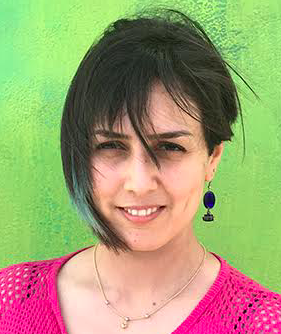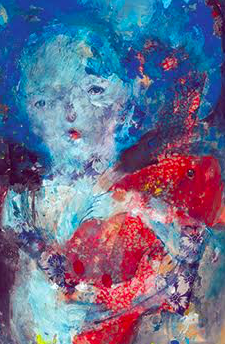
FARMINGTON – It is with great pride that the UMF Emery Community Arts Center presents “Inner Fragments,” an exhibition of art by 16 Iranian female artists. Curated by Iranian artists Parisa Ghaderi and Mahsa Soroudi, this striking show is the first-time many of these original works have been exhibited in the U.S.

The exhibit is on display in Emery’s Flex Space Gallery from Thusday, Sept. 20 through Thursday, Nov. 1.
There will be an opening reception from 5-7 p.m., Sept. 20, at which the curators will be present. In addition, a presentation by the curators will take place at 12 p.m., Friday, Sept. 21, in the Emery Performance Space.
Iranian art has a rich, profound and prominent art heritage, including outstanding Persian rugs, magnificent tile work, enormous rock reliefs and detailed Persian miniatures. Like many other countries, it has evolved over time and has found a unique voice in the modern contemporary art scene. Many of the artists participating in the exhibition live and work inside Iran and represent a new wave in contemporary Iranian art. They

include:
Hadieh Afshani
Mahshid Asoudekhah
Ghazaleh Baniahmad
Nasim Davari
Sanaz Dezfoulian
Narcisse E.Esfahani
Maryam Farahzadi
Elahe Farzi
Neda Moinafshari
Niloofar Mohammadifar
Farnaz Rabieijah
Azadeh Ramezani Tabrizi
Nastaran Safaei
Mahshid Soroudi
Tarlan Tabar
Nazli Tahvili
For these emerging artists, born after the 1979 Islamic Revolution, Iran’s political and social turbulence has not been an obstacle in the development of their artistic voice. In fact, it has helped fuel and shape it. Their art has been overshadowed by revolution, war and sanctions. These industrious artists await an opportunity to showcase their artwork.
This exhibition portrays a slice of women’s lives that is profound and beyond typical clichés. It is an invitation to forget the stereotypical images of Iran and women and it invites the viewer to be part of their intimate and private moments and through their lens. It will create a space for dialogue and constructive discussion between the artists and the American audience thus engaging in an artistic discourse regardless of political and geographical boundaries.

About the Curators
Mahsa Soroudi is an artist and independent art curator who is interested in interdisciplinary topics that can evolve into thought-provoking and meaningful exhibitions as well as become case studies that exist beyond the exhibition for further exploration. She is also passionate about taking steps towards familiarizing the community with the contemporary artists who may go disregarded or unseen due to the absence of fair exposure. In the recent years, she’s been concerned about how contemporary Iranian art is being showcased in other countries and to what extent these expositions have presented Iranian contemporary art unaffected by popular stereotypes.
Parisa Ghaderi is a visual artist and filmmaker. She earned her B.A. in Visual Communications from Art & Architecture University (Tehran, Iran) in 2006, and her MFA in Art and Design from the University of Michigan (USA) in 2014. Her work responds to her experience of living in Iran and the U.S. which has revealed an in-between state about distance; In her work, she deals with emotional and physical distance, compounded loss, and the opacity of language.
Soroudi and Ghaderi graduated from the same college in Iran in 2006. After moving to the U.S. in 2009, and witnessing how Iranian art and specifically women artists are represented in media and the art scene, they both felt the urge to resolve and correct this image, by showing a more honest perspective of what really goes in Iran, and to focus on younger generation of artists who share the same dilemma and themes in their work.





Looks so interesting!